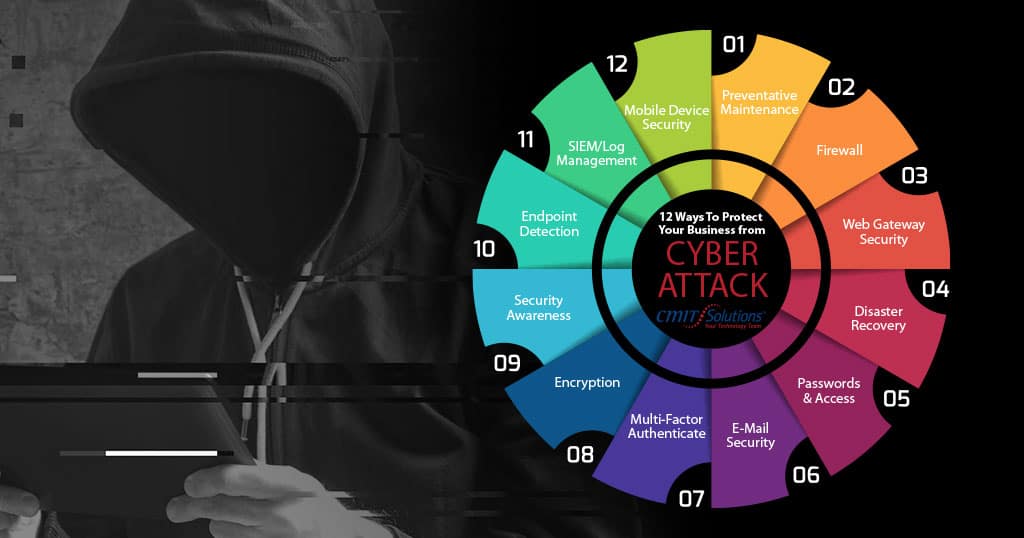
Know the Least Common PIN Numbers That Can Thwart Cyber Threats
Know the least common PIN numbers that can thwart cyber threats? It’s a question more crucial than ever in our increasingly digital world. We’re constantly bombarded with warnings about data breaches and online security, but how many of us really understand the weak points in our own digital defenses? This post dives deep into the world of PINs, exploring common pitfalls, revealing surprisingly effective strategies for choosing less predictable numbers, and discussing the trade-offs between memorability and security.
Get ready to upgrade your PIN game!
We’ll uncover the shockingly simple patterns many people fall into when creating PINs – from obvious sequences to easily guessed birthdates. We’ll analyze real-world examples of data breaches caused by weak PIN choices, highlighting just how devastating a poorly chosen PIN can be. Then, we’ll explore techniques for generating stronger, more random PINs, considering the impact of length and complexity.
Finally, we’ll discuss alternative authentication methods, weighing the pros and cons of biometric security.
Understanding Common PIN Structures

PINs, or Personal Identification Numbers, are a crucial element of online and offline security. However, many individuals choose PINs that are easily guessable, significantly increasing their vulnerability to cyberattacks. Understanding the common patterns in weak PINs is the first step towards improving personal security.
Weak PINs are often based on easily predictable patterns, making them susceptible to brute-force attacks. These attacks systematically try every possible combination until the correct PIN is found. The more predictable the PIN, the faster this process becomes, leaving sensitive data exposed.
Common PIN Patterns and Vulnerabilities
Let’s examine some of the most frequent patterns used in PINs and assess their associated security risks. The table below illustrates these patterns, their frequency of use (which is an estimate based on various security reports and studies), and their vulnerability level.
| Pattern Type | Example PINs | Frequency of Use | Vulnerability Level |
|---|---|---|---|
| Sequential Numbers | 1234, 5678, 9012 | High | Very High |
| Repeated Digits | 1111, 2222, 7777 | High | Very High |
| Birthdates (MMDD, DDMM, YYYY) | 0123, 1298, 1985 | High | High |
| Simple Combinations | 1212, 1010, 0000 | Medium | Medium |
| Keyboard Patterns | 2580 (straight line), 1470 (diagonal) | Low | Medium |
Security Risks of Predictable PINs, Know the least common pin numbers that can thwart cyber threats
Using easily predictable PINs exposes individuals to a range of security risks. The most significant risk is the ease with which a brute-force attack can be carried out. Because these attacks systematically try combinations, easily guessed PINs are cracked quickly. This can lead to unauthorized access to bank accounts, online services, and other sensitive information.
Furthermore, the use of easily guessable PINs can increase the risk of social engineering attacks. Attackers might try to guess a person’s PIN based on their publicly available information, such as birthdates or anniversaries.
Real-World Examples of Data Breaches Due to Weak PINs
Numerous data breaches have been directly attributed to the use of weak PINs. While specific details of individual cases often remain undisclosed for security reasons, the general pattern is clear: weak PINs are a significant vulnerability.
- The 2017 Equifax data breach, while not solely attributed to weak PINs, highlighted the vulnerability of systems holding large amounts of personal data, including PIN-related information. The breach exposed sensitive information for millions of people, emphasizing the need for strong passwords and PINs.
- Numerous smaller-scale breaches targeting financial institutions have demonstrated the effectiveness of brute-force attacks against users with weak PINs. These breaches often involve the theft of significant sums of money.
- Reports from various cybersecurity firms consistently highlight the prevalence of weak PINs as a major factor contributing to successful account takeovers and identity theft. These reports underscore the widespread nature of this problem.
Exploring Less Common PIN Number Strategies

Choosing a PIN is often treated as a trivial task, but selecting a less common PIN significantly enhances your security posture against various threats, including brute-force attacks and social engineering attempts. This involves moving beyond easily guessable sequences and embracing strategies that increase the complexity and unpredictability of your PIN.We’ve already covered understanding common PIN structures; now let’s delve into proactive strategies for generating more secure PINs.
This isn’t about creating something impossible to remember; rather, it’s about balancing memorability with robust security.
Random Number Generation for PIN Creation
Generating a truly random PIN is arguably the most effective way to enhance security. This eliminates patterns and predictable sequences that attackers might exploit. However, simply stringing together random digits can be difficult to remember. To mitigate this, you could use a dedicated random number generator (available as apps or online tools) and then apply a simple mnemonic technique to aid recall.
For instance, you could associate the generated number with a memorable phrase or image. Let’s say the generator produces “3719”. You might associate this with “March (3rd month) 7th, 19th century” – a memorable date. This makes it easier to remember the randomly generated sequence. The key is to find a personal mnemonic that works best for you.
Mnemonic Techniques for PIN Creation
Mnemonic techniques offer a practical approach to creating memorable yet complex PINs. Instead of relying on purely random numbers, these techniques leverage personal associations to build a memorable sequence. One method is to use the first letters of words in a phrase, but ensure that the phrase is not easily guessable. For example, “MyDogLovesPizza” could translate to “MdlP”, which is easily memorable, but perhaps too short.
Alternatively, you could use a longer phrase and select specific numbers or letters from it to create a longer PIN. The crucial element is to make the mnemonic personal and difficult for others to guess. Avoid using common phrases or readily available personal information.
PIN Length and Brute-Force Attack Complexity
Increasing the length of your PIN exponentially increases the difficulty of a brute-force attack. A four-digit PIN has 10,000 possible combinations (0000-9999). A six-digit PIN, however, expands the possibilities to 1,000,000. Each additional digit adds a significant layer of protection. While longer PINs are more secure, they also become harder to remember.
Therefore, finding a balance between security and memorability is crucial. A six-digit PIN offers a good compromise between security and usability, although eight digits or more would provide significantly increased security. Consider the security requirements of the account you’re protecting when deciding on length. A banking PIN might warrant a longer length than a less sensitive app.
Picking less common PINs is crucial for online security, but even the strongest password is useless if your apps are vulnerable. That’s why understanding the future of app development, as outlined in this insightful article on domino app dev the low code and pro code future , is so important. Ultimately, strong security starts with both robust passwords and secure application architecture.
Creating a Strong, Memorable PIN: A Step-by-Step Process
The following flowchart Artikels a structured approach to creating a strong, memorable PIN:[Imagine a flowchart here. The flowchart would begin with a “Start” box. Then, a decision box: “Use Random Number Generator? (Yes/No)”. If “Yes”, a box: “Generate Random Number”.
Then, a box: “Create Mnemonic Association”. If “No”, a box: “Choose a Personal Phrase”. Then, a box: “Select Digits/Letters from Phrase”. Next, a box: “Ensure Sufficient Length (e.g., 6-8 digits)”. Then, a box: “Test Memorability”.
A decision box: “Easily Remembered? (Yes/No)”. If “No”, loop back to the appropriate previous step. If “Yes”, a box: “Record PIN Securely (but not with the PIN itself)”. Finally, an “End” box.]The flowchart visually represents the process, allowing users to follow a systematic approach to create and test a PIN before committing it to memory.
The iterative nature of the flowchart allows for adjustments until a suitably memorable and secure PIN is created.
Analyzing the Effectiveness of PIN Length and Complexity
Choosing a strong PIN is crucial in today’s digital landscape. While longer PINs are generally considered more secure, the type of characters used also plays a significant role. This analysis explores the interplay between PIN length, character types, and the resulting security strength.The relationship between PIN length, character types, and security is directly proportional. Longer PINs with a diverse character set significantly increase the difficulty for attackers to guess or crack them through brute-force methods.
Conversely, short PINs using only numbers are easily compromised. Adding letters and symbols exponentially increases the number of possible combinations, making brute-forcing exponentially more time-consuming and resource-intensive.
PIN Length and Character Type Security Comparison
The following table illustrates the impact of different PIN configurations on security. The security strength is a relative measure, reflecting the number of possible combinations and the time required for brute-force attacks. Remember, this is a simplified representation and doesn’t account for sophisticated cracking techniques.
| PIN Configuration | Character Types | Length | Approximate Number of Combinations | Relative Security Strength |
|---|---|---|---|---|
| Example 1 | Numeric | 4 | 10,000 | Low |
| Example 2 | Numeric | 6 | 1,000,000 | Medium |
| Example 3 | Alphanumeric (lowercase) | 6 | 308,915,776 | High |
| Example 4 | Alphanumeric (lowercase and uppercase) + Symbols | 8 | Approximately 2.8 x 1012 | Very High |
Impact of Different Character Sets on PIN Effectiveness
Using only numbers drastically reduces the security of a PIN. A four-digit numeric PIN has only 10,000 possible combinations, making it vulnerable to brute-force attacks. Including lowercase and uppercase letters expands the possibilities considerably. The addition of special characters further increases the complexity, making it exponentially harder to crack. For example, a six-digit PIN consisting only of numbers can be cracked relatively quickly, while an eight-character alphanumeric PIN with symbols would take significantly longer, even with powerful computing resources.
The increased computational effort required directly translates to enhanced security.
Memorability versus Security Trade-off in PIN Selection
There’s a constant tension between creating a memorable PIN and ensuring its security. While a simple, easily remembered PIN is convenient, it compromises security. Conversely, a highly complex PIN, while secure, is difficult to remember and may lead to users writing it down (which negates the security benefits). Finding the right balance requires a careful consideration of individual needs and risk tolerance.
For example, a memorable phrase can be used as a basis for a more complex PIN, incorporating numbers and symbols derived from the phrase. This approach allows for a relatively secure and reasonably memorable PIN. Consider a strong password manager if memorizing complex PINs is too challenging.
Mitigating Risks Associated with PIN Reuse: Know The Least Common Pin Numbers That Can Thwart Cyber Threats
Reusing the same PIN across multiple accounts, while seemingly convenient, significantly increases your vulnerability to security breaches. A single compromised PIN can grant access to all your linked accounts, potentially leading to significant financial loss, identity theft, and reputational damage. Understanding the risks and implementing effective strategies for PIN management is crucial for protecting your digital assets.The security vulnerabilities associated with PIN reuse stem from the interconnected nature of online services.
If a single account is compromised – whether through phishing, malware, or a data breach – the attacker gains access not just to that specific account, but potentially to all accounts using the same PIN. This creates a domino effect, escalating the impact of a single security lapse.
Real-World Examples of PIN Reuse Leading to Security Breaches
Consider a scenario where an individual uses the same PIN for their banking app and their online shopping account. If a data breach exposes the credentials for the online shopping site, the attacker now possesses the PIN to access the individual’s bank account. This could result in unauthorized transactions and substantial financial losses. Another example might involve a compromised ATM, where a keylogger or hidden camera records PINs.
If the victim uses that same PIN for online banking, the attacker gains access to their financial accounts remotely. These scenarios highlight the severe consequences of PIN reuse.
Best Practices for Managing Multiple PINs
Effectively managing multiple PINs requires a structured approach that balances security with memorability. Creating a unique, strong PIN for each account is the cornerstone of this strategy. However, remembering numerous complex PINs can be challenging. A practical solution involves using a mnemonic system, perhaps associating each PIN with a specific account or a memorable phrase related to the service.
For instance, a longer PIN could be broken down into smaller, more manageable chunks associated with details of the account. Another method involves creating a pattern based on a core number and slight variations for each account. This ensures uniqueness while minimizing the memorization load.
Utilizing Password Managers for Secure PIN Storage
Password managers offer a robust and convenient solution for storing and managing multiple PINs securely. These tools employ strong encryption to protect your sensitive information, ensuring that even if your device is compromised, your PINs remain safe. Reputable password managers also offer features like auto-fill, simplifying the login process and reducing the risk of human error. The added benefit is that many password managers generate strong, unique passwords and PINs, taking the burden of creation off the user and ensuring maximum security.
Choosing a reputable password manager with strong security protocols is crucial for maximizing the benefits of this approach.
Exploring Biometric Authentication Alternatives

PINs, while ubiquitous, are vulnerable to various attacks. Biometric authentication offers a compelling alternative, leveraging unique physiological or behavioral characteristics for verification. However, it’s crucial to understand both the advantages and the inherent security risks associated with this technology.Biometric authentication methods encompass a range of technologies, each with its own strengths and weaknesses. Fingerprint scanning, for instance, is widely adopted due to its relative simplicity and cost-effectiveness.
Facial recognition, increasingly prevalent in smartphones and security systems, offers a contactless approach. Other methods include iris scanning, which boasts high accuracy, and voice recognition, convenient but susceptible to spoofing. Compared to PIN-based authentication, biometrics offer a potentially stronger security posture, as they are inherently more difficult to guess or steal. However, biometric systems are not infallible and can be compromised.
Comparison of Biometric and PIN Authentication Methods
The following table summarizes the advantages and disadvantages of biometric authentication compared to PIN-based systems. It’s important to remember that the effectiveness of any authentication method depends on its implementation and the overall security architecture.
| Feature | Biometric Authentication | PIN-Based Authentication |
|---|---|---|
| Security Strength | Generally stronger, harder to replicate or steal, but susceptible to spoofing or data breaches. | Relatively weak, susceptible to guessing, shoulder surfing, and keylogging. |
| Convenience | Highly convenient, often seamless integration into devices. | Requires remembering and inputting a code, can be inconvenient. |
| Cost | Implementation costs can be higher, especially for advanced systems. | Relatively low cost to implement. |
| Usability | Can be affected by environmental factors (e.g., dirty fingerprint sensors). Some methods may be less accessible to individuals with disabilities. | Generally easy to use, accessible to most individuals. |
| Data Breach Implications | Biometric data breaches can have severe consequences, potentially leading to identity theft and other serious crimes. Compromised data is harder to replace than a PIN. | A PIN breach is less severe, as it can be easily changed. |
Security Implications of Biometric Data
The security of biometric systems hinges on the robust protection of the collected data. A breach involving biometric information carries significant risks because unlike passwords, biometric data cannot be easily changed. Once compromised, an individual’s biometric information can be used for identity theft, fraud, and other malicious activities. For example, a large-scale data breach at a company using facial recognition for access control could expose the biometric data of thousands of employees, leaving them vulnerable to identity theft and potentially even physical harm.
Therefore, robust security measures, including encryption, access controls, and data minimization principles, are crucial for mitigating the risks associated with biometric data storage and processing.
Concluding Remarks
Choosing a strong PIN is like building a sturdy lock on your digital front door. While perfectly memorable PINs might seem like a dream, understanding the strategies Artikeld here – from avoiding obvious patterns to utilizing random number generation and exploring alternative authentication – will significantly enhance your online security. Remember, a little extra effort in choosing a strong, unique PIN for each account can go a long way in protecting your sensitive information.
So, take control of your digital security, and start building those impenetrable digital fortresses, one strong PIN at a time!
FAQ Overview
What if I forget my strong, randomly generated PIN?
Write it down securely! Use a password manager, a dedicated notebook kept in a safe place, or a trusted, secure digital note-taking app. Never store it electronically on your main device.
Are all biometric authentication methods equally secure?
No, the security of biometric methods varies. Fingerprint readers, for instance, can be fooled by high-quality replicas. Facial recognition is vulnerable to spoofing with photos or videos. The best method depends on the specific implementation and technology used.
How often should I change my PINs?
While there’s no single magic number, it’s a good idea to change your PINs periodically, especially if you suspect a security breach or if you’ve used the same PIN for an extended period. Aim for at least once a year or whenever a security incident occurs.
Can I use the same PIN for multiple accounts?
Absolutely not! Reusing PINs is extremely risky. If one account is compromised, all accounts using that same PIN are at risk.





